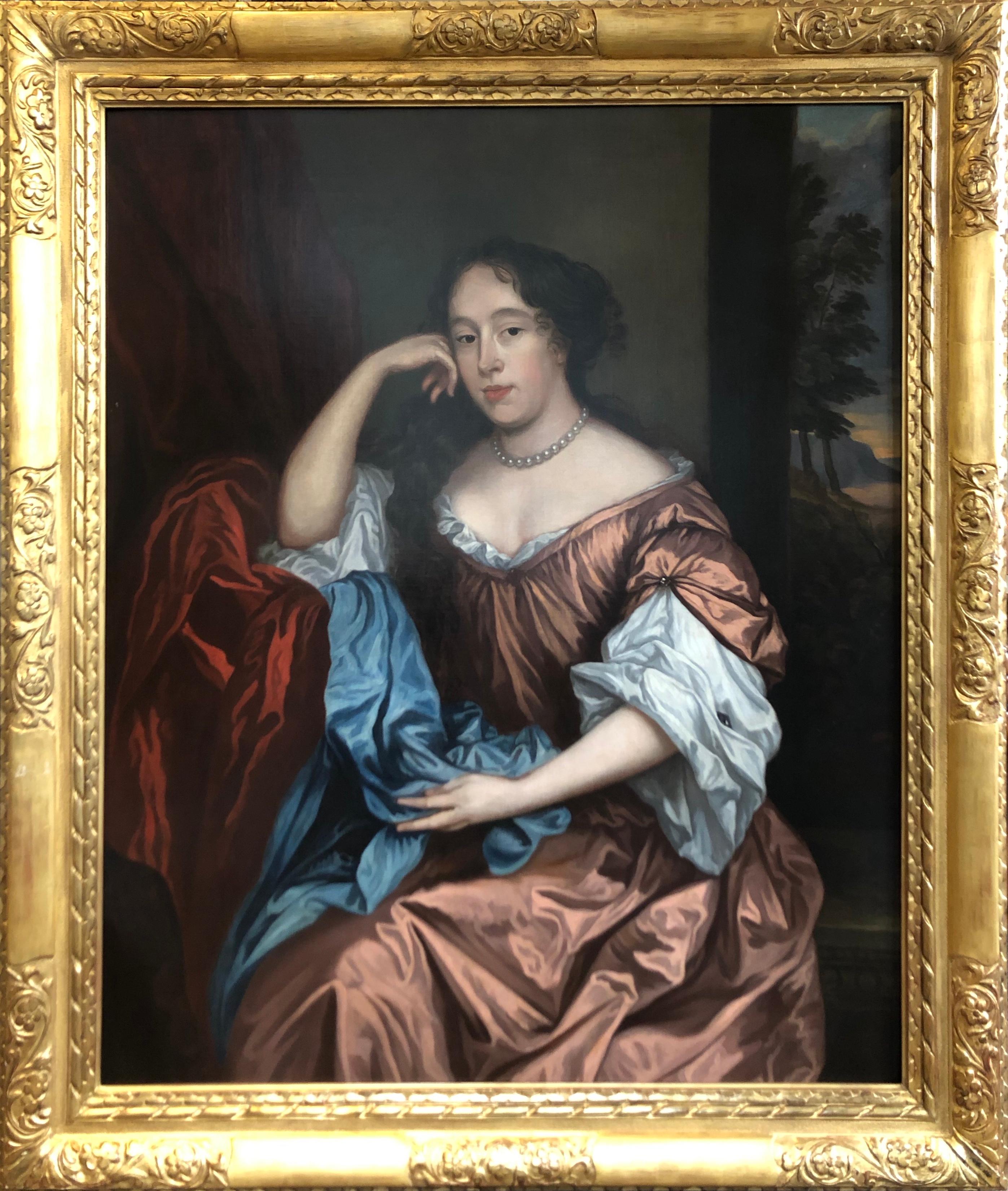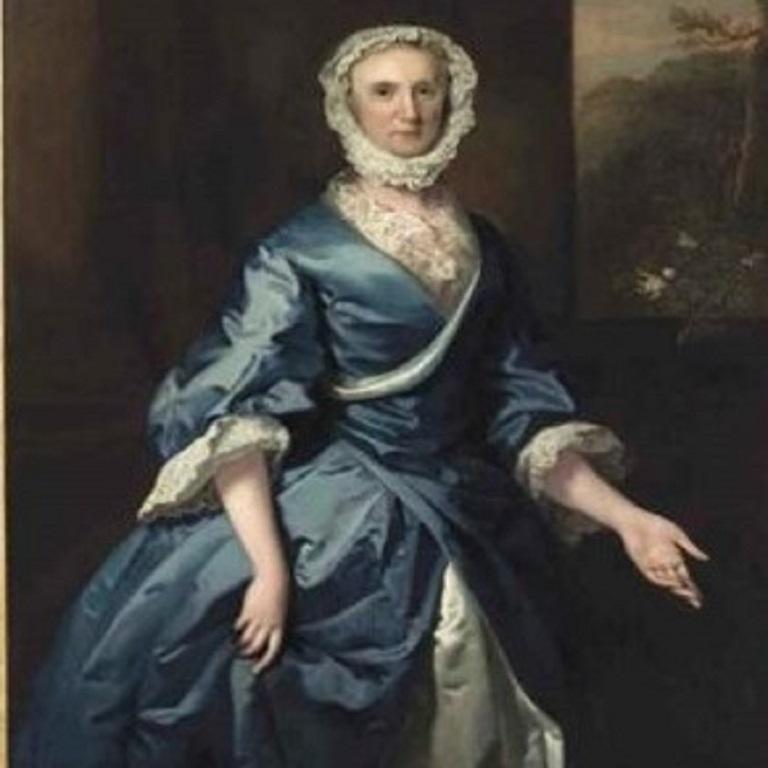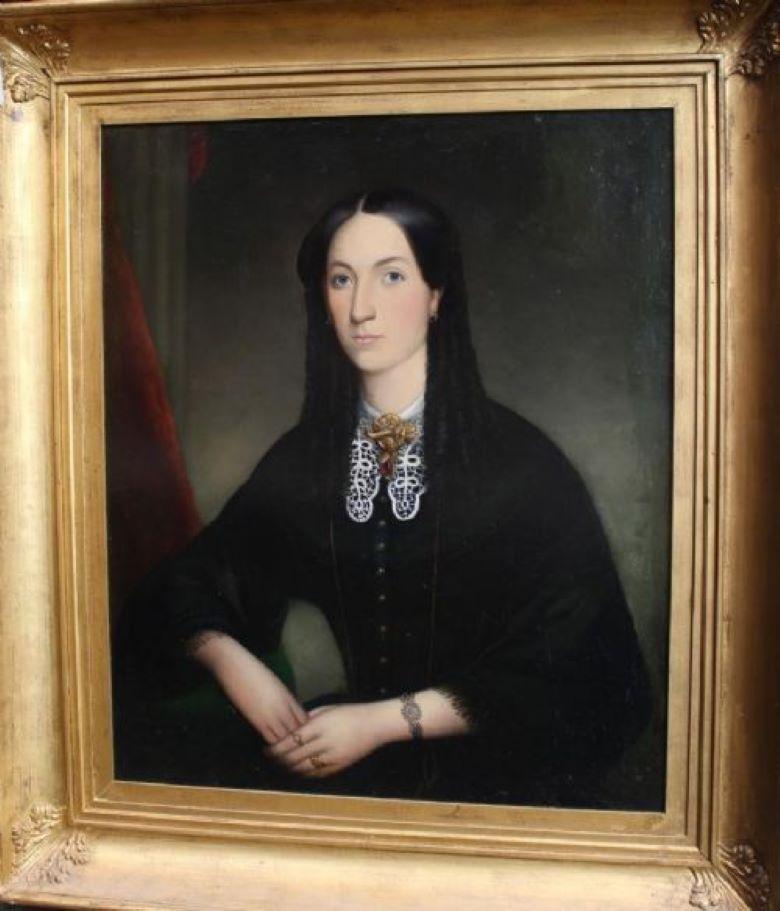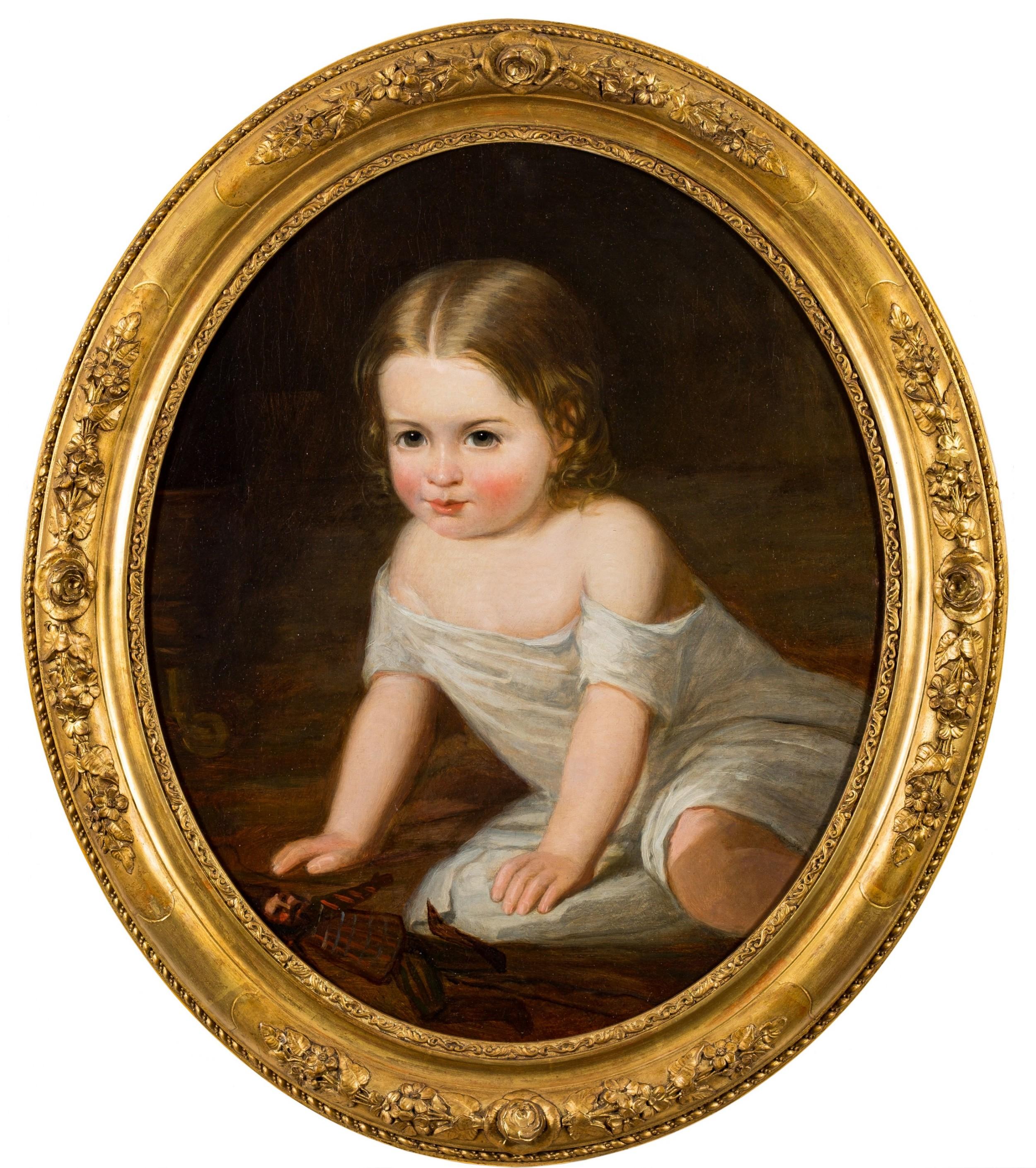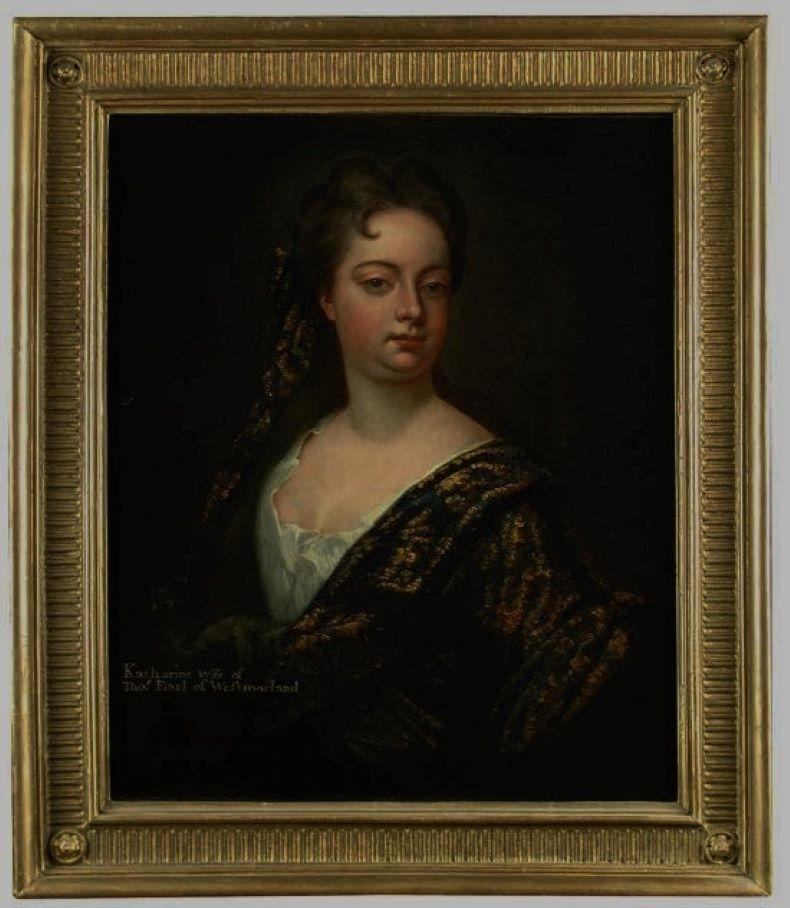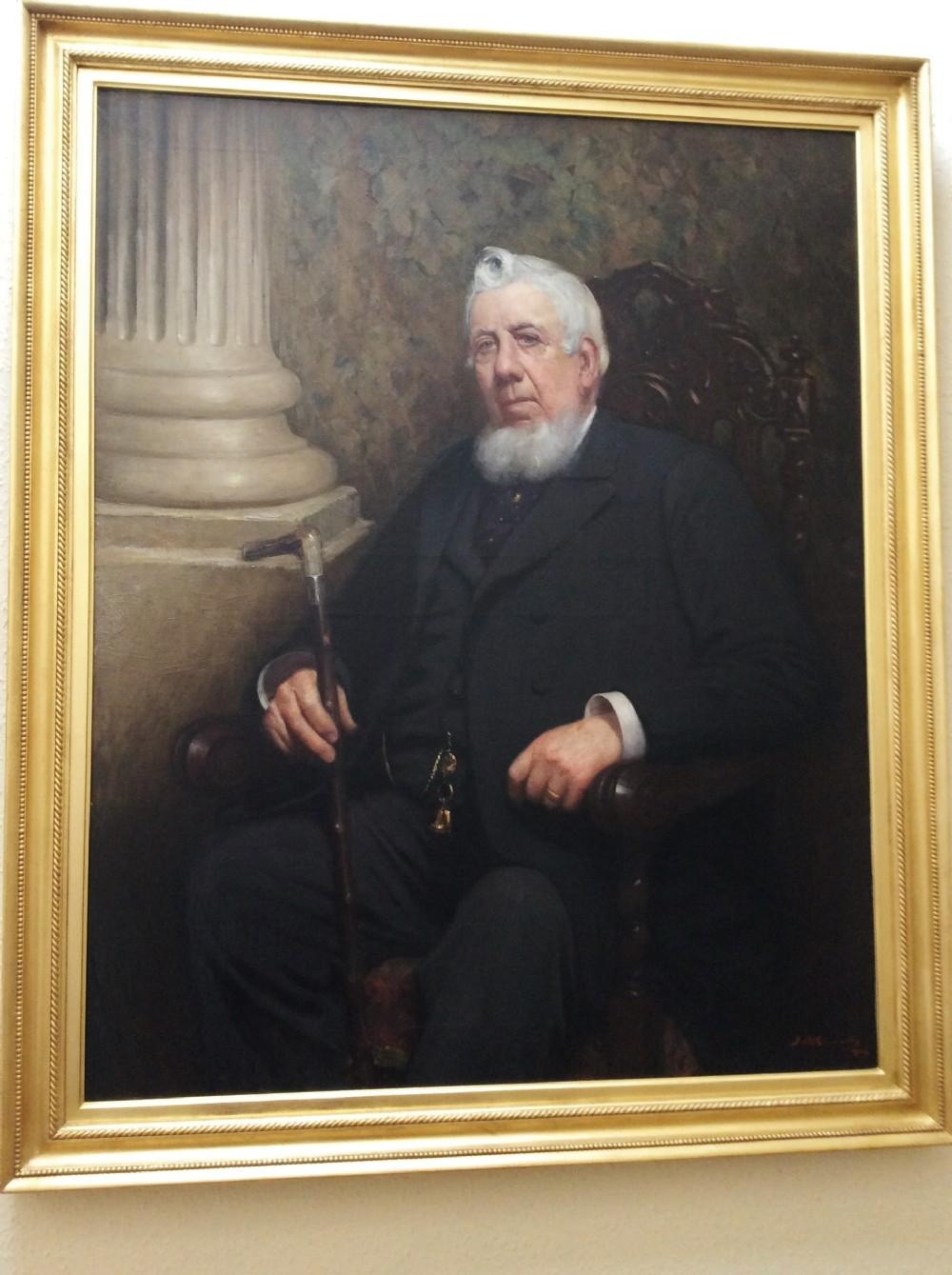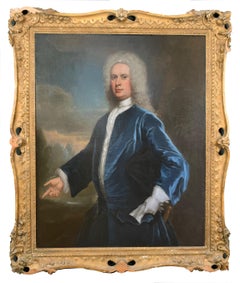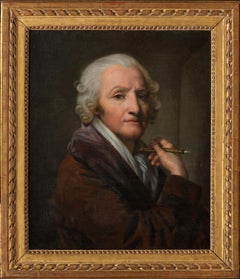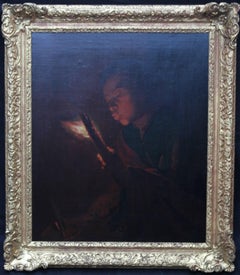
Boy Blowing a Candle - Old Master Dutch oil painting classical candlelight genre
View Similar Items
Want more images or videos?
Request additional images or videos from the seller
1 of 16
Godfried Schalcken (circle)Boy Blowing a Candle - Old Master Dutch oil painting classical candlelight genrecirca 1700
circa 1700
About the Item
- Creator:Godfried Schalcken (circle)
- Creation Year:circa 1700
- Dimensions:Height: 30 in (76.2 cm)Width: 25 in (63.5 cm)
- Medium:
- Movement & Style:
- Period:1700-1709
- Condition:
- Gallery Location:London, GB
- Reference Number:1stDibs: LU85312798201
About the Seller
5.0
Platinum Seller
These expertly vetted sellers are 1stDibs' most experienced sellers and are rated highest by our customers.
1stDibs seller since 2018
398 sales on 1stDibs
More From This SellerView All
- Italian Greyhound and Friends - Italian 17thC Old Master dog art oil paintingBy Francesco FieravinoLocated in London, GBThis stunning Old Master 17th century oil portrait painting is attributed to Francesco Fieravino, an artist famous in his day for still lifes and carpets. This painting which dates t...Category
17th Century Old Masters Animal Paintings
MaterialsCanvas, Oil
- Lady Eleanor Dundas - Old Master 18C Scottish art oil painting female portraitBy Henry Raeburn (circle)Located in London, GBA fine large and stunning Scottish Old Master portrait oil painting on canvas portrait in good condition which depicts Lady Eleanor Dundas in a white dress set against an open landsc...Category
19th Century Old Masters Portrait Paintings
MaterialsOil
- Portrait of Major General James Hanson Salmond - British 18thC art oil paintingBy Sir Thomas LawrenceLocated in London, GBThis superb British Old Master oil painting is attributed to circle of Sir Thomas Lawrence. Painted circa 1795, the sitter is Major-General James Hanson Salmond (1766–1837) an office...Category
1790s Old Masters Portrait Paintings
MaterialsOil
- Portrait of a Gentleman - British 18th Century Old Master art oil paintingBy Lemuel Francis AbbottLocated in London, GBThis superb British Old Master portrait is by noted artist Lemuel Francis Abbott. Painted circa 1790, the composition is a half-length standing portrait of a gentleman gazing to his ...Category
1790s Old Masters Portrait Paintings
MaterialsOil
- Portrait of a Lady by Fountain in Landscape - Dutch Old Master art oil paintingBy Nicolaes MaesLocated in London, GBThis superb Dutch Old Master portrait oil painting is attributed to circle of Nicolaes Maes. Painted circa 1670, the painting is of a lady, sat by a classical fountain with statue an...Category
1670s Old Masters Portrait Paintings
MaterialsOil
- Portrait of a Boy with Bird - British 17th century art Old Master oil paintingLocated in London, GBThis stunning 17th century Old Master portrait oil painting is attributed to Godfrey Kneller. Painted circa 1680 it is a superb full length portrait of a blonde haired boy holding a struggling bird. He is bare foot and dressed in a white shirt with gold shawl around him. In the background is a blue drape. There is lovely detail and brushwork in his facial features and vibrant colouring. This a superb 17th century Old Master oil painting housed in a lovely frame. Provenance. Two ascribed labels verso Christie's stamp verso. . Condition. Oil on canvas in good condition, 36 inches by 28 inches approx. Frame. Housed in an ornate frame, 43 inches by 35 inches approx. Sir Godfrey Kneller, 1st Baronet (born Gottfried Kniller; 8 August 1646 – 19 October 1723), was the leading portrait painter in England during the late 17th and early 18th centuries, and was court painter to English and British monarchs from Charles II to George I. Kneller was born Gottfried Kniller in the Free City of Lübeck, the son of Zacharias Kniller, a portrait painter. Kneller studied in Leiden, but became a pupil of Ferdinand Bol and Rembrandt Harmenszoon van Rijn in Amsterdam. He then travelled with his brother John Zacharias Kneller, who was an ornamental painter, to Rome and Venice in the early 1670s, painting historical subjects and portraits in the studio of Carlo Maratti, and later moved to Hamburg. The brothers came to England in 1676, and won the patronage of the Duke of Monmouth. He was introduced to, and painted a portrait of, Charles II. In England, Kneller concentrated almost entirely on portraiture. In the spirit of enterprise, he founded a studio which churned out portraits on an almost industrial scale, relying on a brief sketch of the face with details added to a formulaic model, aided by the fashion for gentlemen to wear full wigs. His portraits set a pattern that was followed until William Hogarth and Joshua Reynolds. Nevertheless, he established himself as a leading portrait artist in England. When Sir Peter Lely died in 1680, Kneller was appointed Principal Painter in Ordinary to the Crown by Charles II. For about 20 years (c.1682-1702) he lived at No. 16-17 The Great Piazza, Covent Garden. In the 1690s, Kneller painted the Hampton Court Beauties depicting the most glamorous ladies-in-waiting of the Royal Court for which he received his knighthood from William III. He produced a series of "Kit-cat" portraits of 48 leading politicians and men of letters, members of the Kit-Cat Club. Created a baronet by King George I on 24 May 1715, he was also head of the Kneller Academy of Painting and Drawing 1711–1716 in Great Queen Street, London, which counted such artists as Thomas Gibson amongst its founding directors. His paintings were praised by Whig members including John Dryden, Joseph Addison, Richard Steele, and Alexander Pope. On the landing in Horsham Museum hang works of art from the Museum's extensive painting collection, featuring a large 18th-century portrait of Charles Eversfield and his wife, of Denne Park House. In the painting Eversfield is giving his wife some violets which signifies fidelity, love and honesty. It is likely that the picture was cut down at some time as it was unusual to stop just below the knee. It may have been painted by more than one person: someone who specialised in clothing, another in drapes, and so on, with perhaps Kneller painting the heads, for it was the portraits that gave the sitters their identity, everything else is rather formulaic. He married a widow, Susanna Grave, on 23 January 1704 at St Bride...Category
1680s Old Masters Portrait Paintings
MaterialsOil
You May Also Like
- Portrait of a Lady, After Sir Peter Lely (1610-1680) Oil PaintingBy After Sir Peter LelyLocated in Uppingham, GBOil Painting After Sir Peter Lely (1610-1680) Portrait of a Lady Housed in a Lely gold Leaf Frame. Peter Lely: In 1647 he became a member of the Pain...Category
17th Century Old Masters Portrait Paintings
MaterialsOil
- Oil Painting Portrait, attributed to John Vanderbank (1694-1739)By John VanderbankLocated in Uppingham, GBOil Painting Portrait of John Campbell, 4th Duke of Argyll,, att to John Vanderbank (1694-1739) Housed in a swept frame which has been restored after photo. Canvas Size 50" x 40", Fr...Category
1690s Old Masters Portrait Paintings
MaterialsCanvas, Oil
- Portrait of Jean-Baptiste Greuze, painted on linen by his daughter Anna GreuzeLocated in PARIS, FRThis replica of the last self-portrait of Jean-Baptiste Greuze painted in 1804, executed by his daughter Anna at her father's side and recently rediscovered, provides us with a poignant image of the great artist, represented with panache despite the disillusions of life. 1. Jean-Baptiste Greuze Jean-Baptiste Greuze was the sixth child of a roofer from Tournus and retained a certain rusticity in his behaviour from his provincial childhood, beyond his taste for describing picturesque scenes of the countryside. He initially started training with a little-known painter from Lyon, Charles Grandon, before his genius was recognised in Paris where he became a full-time student of the Académie (of Painting) in 1755. He exhibited his work for the first time at the Salon during the summer of 1755, before leaving on a trip to Italy in the company of Louis Gougenot, abbot of Chezal-Benoît. Upon his return to Paris, Greuze became a prolific painter, participating widely in the Salons held between 1759 and 1765, to which he sent no less than 63 paintings: numerous genre scenes (The Marriage Contract, The Beloved Mother), but also portraits of his family circle, of courtiers and art lovers, or of his colleagues. The Academy closed the doors of the Salons to him in 1767 for not having produced his reception piece within six months of his reception, as was the tradition. He worked actively on this painting (Emperor Severus rebukes Caracalla, his son, for trying to assassinate him ) until the summer of 1769, tackling historical and mythological subjects for the first time. Once this was completed, he was then fully admitted to the Academy, but as a genre painter, and not as an historical painter, which had been one of the greatest humiliations of his life. Greuze then refused any participation in events organised by the Academy or its successor, the Academy of Fine Arts until 1800. Abandoning history painting, he gave a new twist to genre scenes, bringing them closer to history painting, as in this pair of canvases which constitutes some of his masterpieces: The Paternal Curse: The Ungrateful Son and The Paternal Curse: The Punished Son . Married in 1759 to Anne-Gabrielle Babuti, the daughter of a Parisian bookseller, his marriage was unhappy and his wife probably frequently unfaithful. The institution of divorce enabled him to record their separation in 1793, keeping his two daughters Anna-Geneviève, born in April 1762, and Louise-Gabrielle, born in May 1764, with him. Little is known about his daughter Anna except that she was herself a painter and lived with her father until his death. It is likely that most of the paintings she produced up to that date were attributed to her father, whose technique she shared to a great extent, making it extremely difficult to establish an autonomous corpus of her paintings. Greuze died in his studio at the Louvre on March 21st 1805. The attention paid to the expressivity of his characters and the emotional charge they convey enabled Jean-Baptiste Greuze to enjoy immense popularity with the eighteenth-century public, and they still constitute Greuze's true modernity. As the artist said, "I dipped my brush in my heart". Greuze was also an exceptional draughtsman and a portraitist of immense talent and exceptional longevity who painted both the Dauphin (the son of Louis XV and father to Louis XVI) and the young Napoleon Bonaparte. 2. Greuze's self-portraits Greuze was very much influenced by Dutch paintings during all his life. While the source of his inspiration for genre scenes can be found in Gerard Dou...Category
Early 1800s Old Masters Portrait Paintings
MaterialsLinen, Oil
- William Wissing (follower) 19th Century Portrait Queen Mary IILocated in York, GBA 19th century oil on canvas, portrait of a young woman.This portrait is believed to be of Queen Mary II taken from an engraving of the painting, Halswell Park Sale, 1948, lot no.1323, Housed in a decorative gilt frame.Size overall being 70 x 86 cm high (27.5 x 33¾ inches approx) size of painting 54 x 68 cm (21 x 26 inches approx) To the rear of the portrait is a newspaper cutting of the engraving ,also a typed note regarding the provenance of the painting (see photo) Condition overall is very good, the Canvas has been relined, under UV there are areas of overpaint to bosom.Frame overall very good some minor self coloured losses Mary II (30 April 1662 – 28 December 1694) Mary, born at St James's Palace in London on 30 April 1662,eldest daughter of James, Duke of York (the future James II & VII) , and his first wife, Anne Hyde. Mary's uncle was King Charles II, her maternal grandfather, Edward Hyde, 1st Earl of Clarendon, served for a lengthy period as Charles's chief adviser. Mary married William of Orange. Willem Wissing, known in England as William Wissing...Category
19th Century Old Masters Portrait Paintings
MaterialsOil
- 17th/18th century Portrait studio Godfrey Kneller of George GranvilleLocated in York, GBA fine oval portrait of George Granville, PC, 1st Baron Lansdowne and "Duke of Albemarle" in the Jacobite peerage (1666-1735) Studio of Sir Godfrey ...Category
18th Century Old Masters Portrait Paintings
MaterialsOil
$8,669 Sale Price20% OffFree Shipping - 18th century antique portrait Edmund Hoyle Circle of James Latham, Edmund Hoyle,Located in York, GB18th century Bust portrait of a gentleman in a blue coat with gold buttons (Said to be Edmund Hoyle, inventor of Whist) circle of James Latham. Housed in a gilt frame the size overall is 71 x 84 cm (28 x 33 inches approx) whilst the painting is 56 x 69 cm ( 22 x 27 inches approx) The overall condition is very good having had some restoration. The painting has been relined, cleaned and re varnished. There has been some strengthening/overpainting. There is a Rectangular patch repair along lower edge, centre, reverse approximately 5 x 7cm with associated retouching to front,all essentially done sympathetically. some fine stable craquelure throughout. Some minor self coloured losses to frame. None of the above detracting from a very attractive portrait. Edmond Hoyle Edmond Hoyle English card game authority, "the Father of whist" Born 1672 England Died 29 August 1769 (aged 96–97) London, England Edmond Hoyle (1672 – 29 August 1769)[1] was a writer best known for his works on the rules and play of card games. The phrase "according to Hoyle" came into the language as a reflection of his generally perceived authority on the subject James Latham James Latham was born in Thurles, County Tipperary, Ireland and possibly related to the family of Lathams of Meldrum and Ballysheehan. After some practice of his art, Latham studied for an academic year in Antwerp (1724–25) where he became a Master of the Guild of St Luke. He returned to Dublin by 1725, and may have visited England in the 1740s, as the influence of Joseph Highmore, as well as Charles Jervas and William Hogarth, is evident in his work of this period. Anthony Pasquin memorably dubbed Latham "Ireland's Van Dyck". Latham died in Dublin on 26 January 1747. Several of James Latham's portraits are in the National Gallery of Ireland collection in Dublin; one is of the famous MP Charles Tottenham (1694–1758) of New Ross, Co. Wexford, "Tottenham in his Boots" (Cat. No.411) and a second is a portrait of Bishop...Category
Mid-18th Century Old Masters Portrait Paintings
MaterialsOil
Recently Viewed
View AllMore Ways To Browse
Candlelight Painting
Dou Dou
Painting 1643
Antique Candle Lighter
Van Honthorst
Gerrit Van Honthorst
Stom Oil
Antique Lace Paint
19th Century Female Portrait
Full Length Oil
Oil Portrait Womans Face
Black Earls
Draped Canvas
Portrait Of A Captain
Portrait King George
Oil Painting Portrait Military
Oil Portrait Officer
Portrait Of King George
